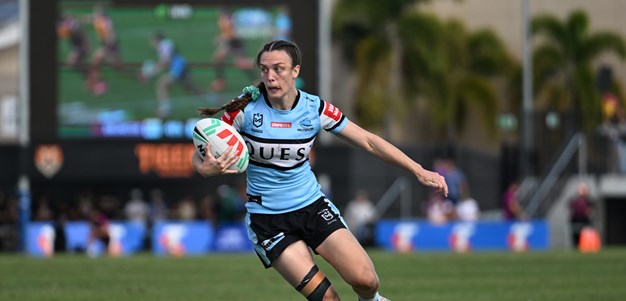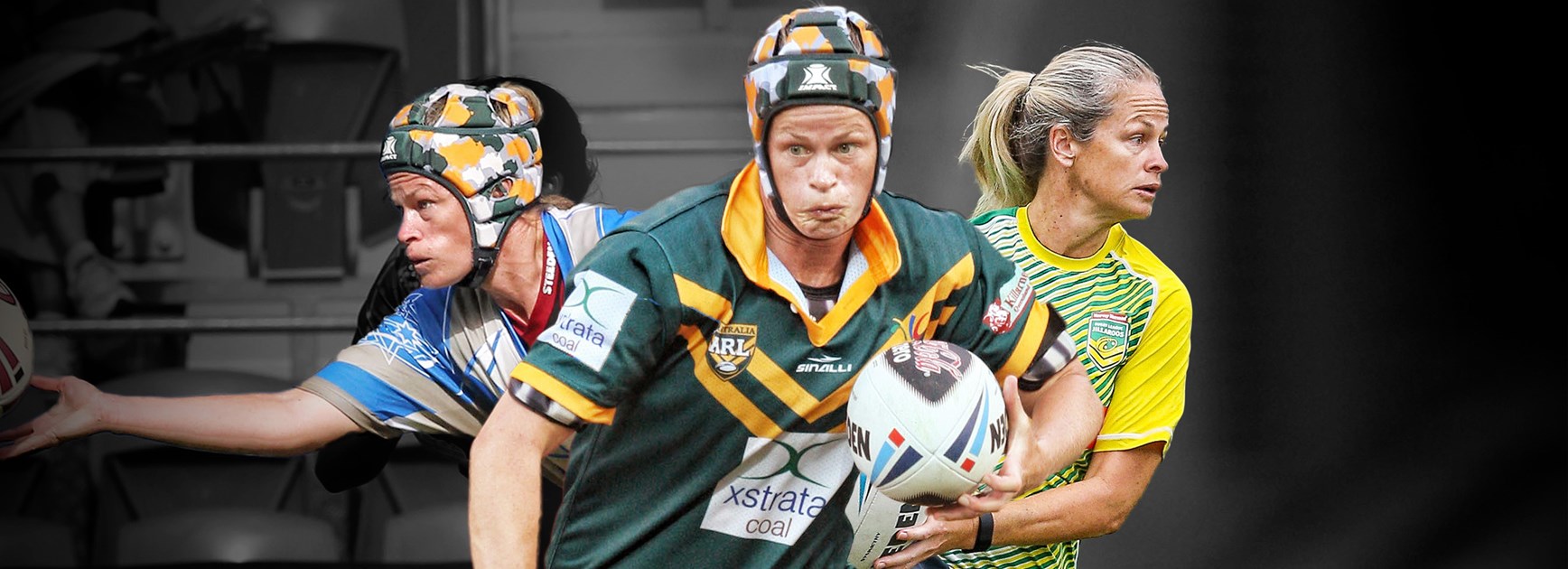
Tahnee Norris is a trailblazer in women's rugby league who featured in four World Cups and has fittingly been honoured as one of the inaugural female inductees into the Hall of Fame. NRL.com caught up with Norris in 2020 to reflect on a journey in the code that continues to push on post-retirement.
You played a bit of netball growing up but talk us through your rugby league journey – when did you start getting involved and did those netball skills help with your development?
I grew up with two brothers and we'd be watching the games on TV of a Sunday afternoon and then at half-time we'd be out in the yard playing - it would be me against the two boys. I always loved footy but girls weren't allowed to play so I turned to netball.
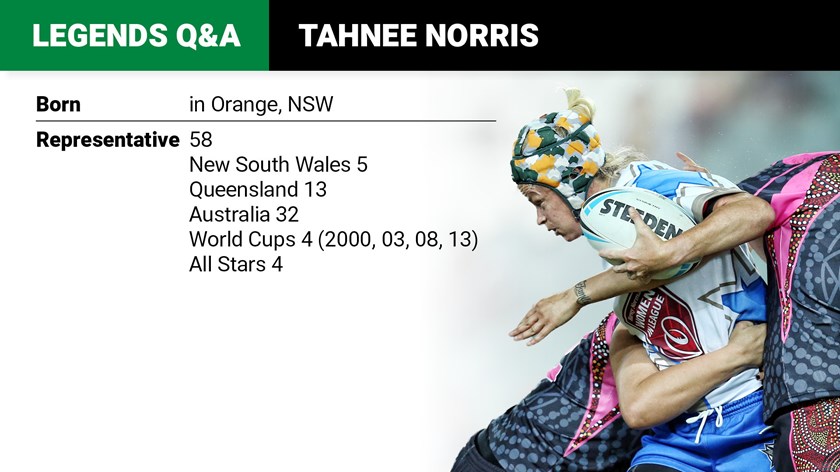
I think the skills learned in netball really helped - the footwork and ball skills are definitely a cross-over for footy and there are a number of former Jillaroos that have the benefits of coming from a netball background.
You wore headgear along with a few teammates throughout your career – any backstory behind that?
Not really, I never found it pretty to wear but Mum wouldn't let me play unless I wore it so it just stuck. Little did she know though I only wore it to hold my hair back.
In a similar story to your former teammate Nat Dwyer, you were born in country NSW and represented the state before moving to Queensland and wearing Maroon in 2002 – what was that like?
It was definitely different, especially for my family. I always used to tell them I wore blue undies every time I played for Queensland. I found it hard to work out the loyalty as I'm passionate for both states. I still go for NSW in the men's games but for the women, I'm team maroon.
You're the most capped Jillaroos player in history with 32 appearances – that must still feel surreal?
It makes me feel a bit old actually, but definitely proud. I loved every moment of wearing the Jillaroos jersey, so many lifetime memories, friends made and lessons learned.
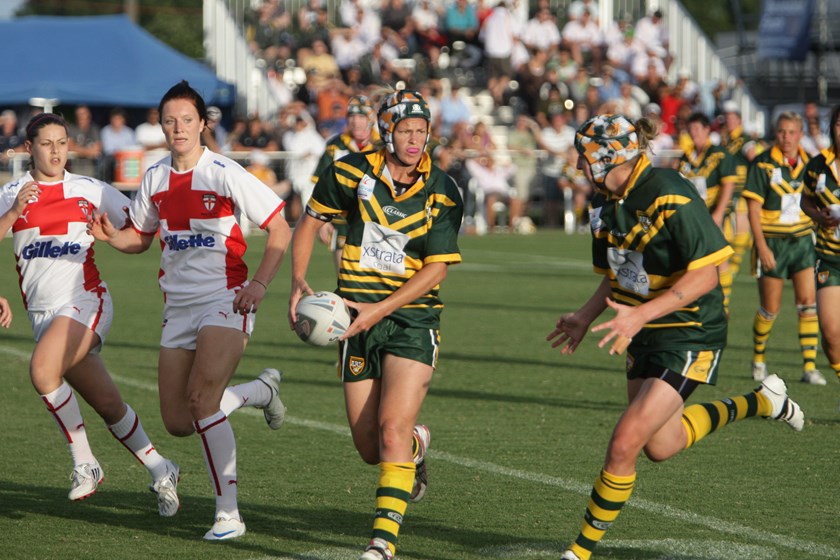
Let's talk about the early days – a lot of your former Jillaroos teammates have described the Kiwi Ferns as the juggernauts that were virtually impossible to beat – what were those matches like?
They were tough, they just had this aura about them, they were so confident and skilful which made them incredibly difficult to beat. I was ridiculously competitive, all I wanted to do was beat them every time we played them.
We had, and still do now, a great deal of respect for the way they played and I have a strong admiration for the Kiwi culture.
How do you sum up the 2013 World Cup triumph then, where you finally beat the Kiwi Ferns on the biggest stage?
In two words, probably, exhilaration and relief. After 15 years of playing the game at that level and always being second to the Kiwi girls, it was a relief. Everything we had gone through had finally paid off.
We worked so hard in that World Cup campaign and it finally happened for us and I think it was the start of women’s rugby league finally getting the recognition it deserved not just in Australia but internationally as well.
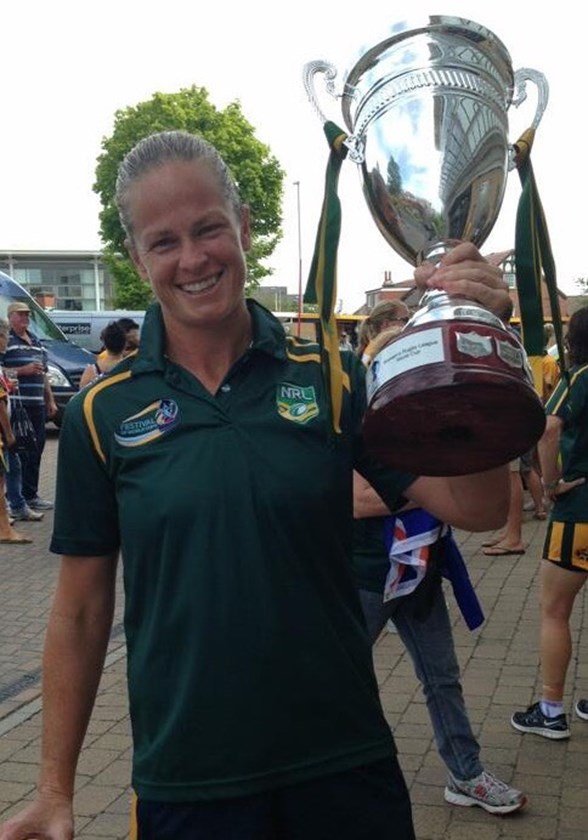
What's a crazy rugby league story you can tell us that happened while on tour?
Where do you start? We were in Fiji one time and there was a crossbar incident that involved Karen Shaw, who had to do a fitness test before the game. She got all the way through the fitness test no dramas and was standing under the goalposts when the crossbar collapsed and fell on her.
It was irrelevant that she passed the original test because she got concussion to get ruled out anyway. There are so many other random stories out there like that but you probably wouldn't be able to print all of them. They all bring a smile to my face looking back though.
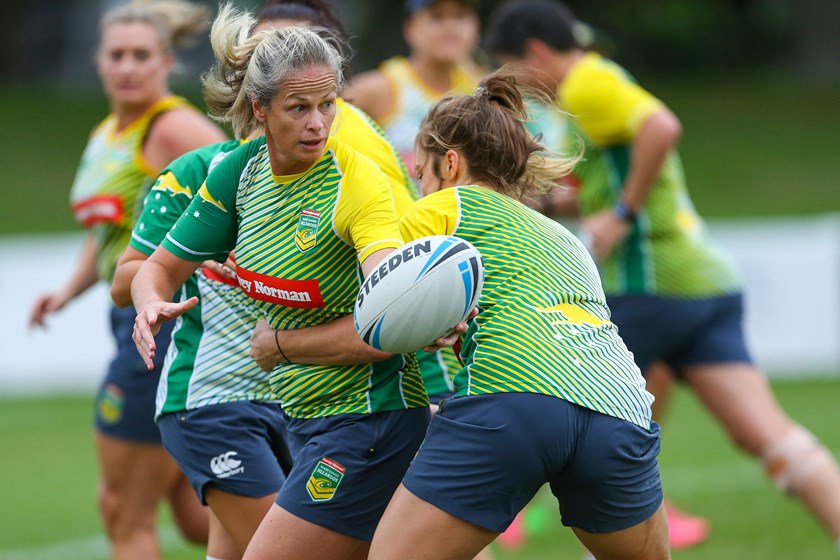
Apart from the World Cup victory in 2013 – does any other game stand out for you?
Probably the 2008 World Cup final at Suncorp Stadium before the men's semi. It was on the big stage, it was the first time we had made the World Cup final and I was captain.
I also had the majority of my family watching for the first time. We didn't get the win, but it was a special game for me.
We talk about trailblazers in the women's game and you're one of them, but who else stands out for when you were coming through?
I think for me there are a few people that stand out that did so much for the game not only as players but for the work they did behind the scenes of keeping the game going. People like Ronnie White, Annie Banks, Loretta O’Neill and Katrina Fanning come to mind.
They all represented the Jillaroos but also did so much for our game off the field for it to survive, back at a time where we struggled to get the support.
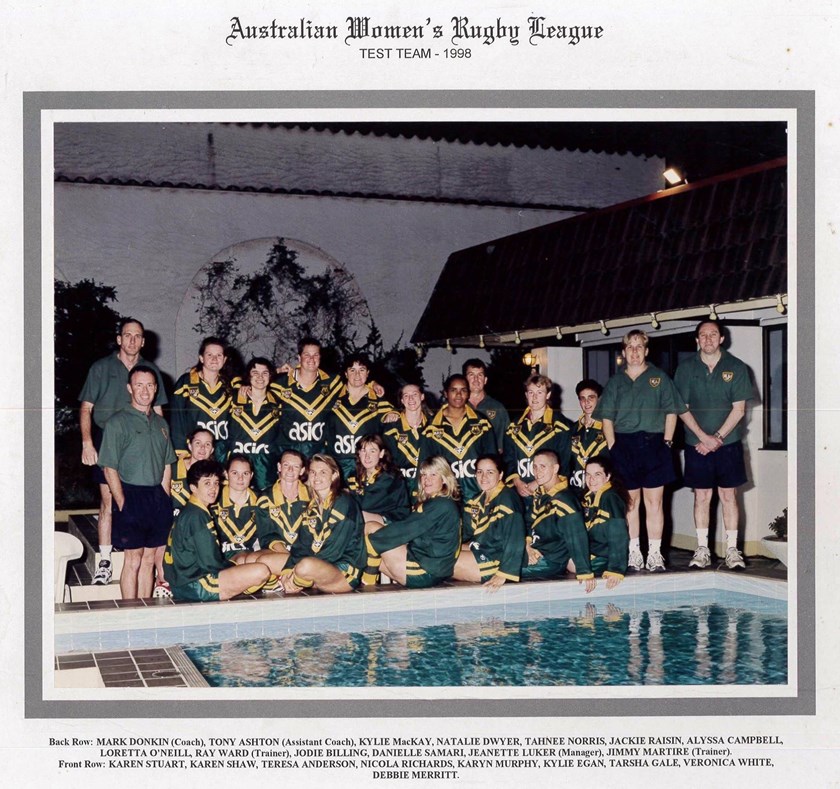
Who was the toughest teammate you played alongside?
Theresa Anderson, who had the nickname "Greenie". She was only a small build but she was tough. Her shoulder would constantly be dislocated in games and she would head over to the sideline fence and do a "Mel Gibson in Lethal Weapon" and hit the fence with her shoulder to pop it back into position and then run back on the field again … it was crazy.
And what about against, was there anyone you knew you'd be in for a tough day trying to stop?
Trish Hina from the Kiwi Ferns was the hardest player I ever played against. She was like a female Andrew Johns, she could throw a 20-metre bullet pass on the fly to either side and she was a fantastic defender for a half.
I copped a few belting rib tackles from her back in the day. I always ended up having to defend up against her for some reason and thought she was a freak of a player.
If there was one player in the current generation you could play alongside that you never got the chance to, who would it be?
I'd have to say Jess Sergis – I love the way she plays and her aggression on the field. She's definitely one player I really enjoy watching now. She wants to win every effort in attack and defence and I love that in a player.
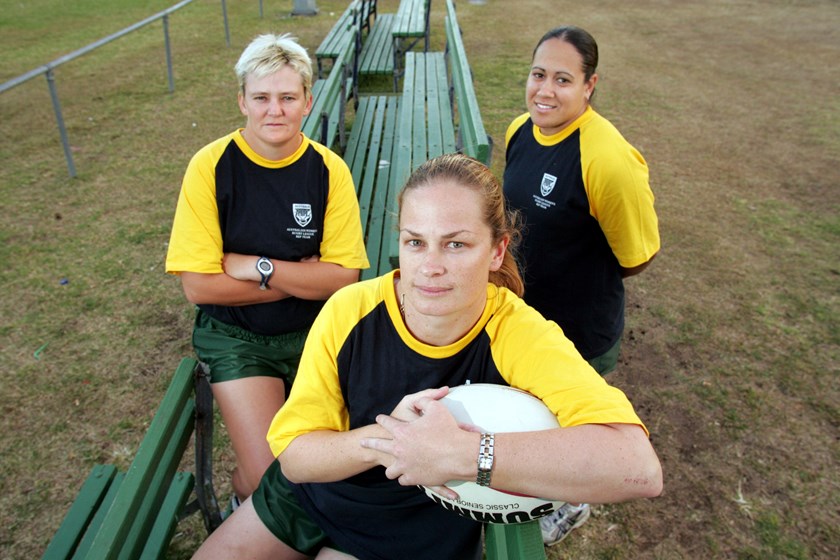
You're still heavily involved in the women's game at a coaching capacity with Burleigh in Queensland, have you got any ambitions to coach your way to the top?
Yeah for sure, I enjoy giving back to the sport and I'm really passionate about coaching and sharing what I've learnt (and still am) along the way to the new crop of players coming through.
I'd definitely jump at the opportunity to be involved with an NRLW team or an Origin team and be a future full-time coach in the game. I don't think it will be long until we see full-time female coaches and I'd love to be at the front of that wave. It's happened with Belinda Sharpe and Kasey Badger in refereeing and I’d love to see it in coaching.
What's life look like now for you?
I’ve always worked in high-performance sport, this has pretty much been my life for more than two decades. I currently work as a program manager for Paddle Australia but with the 2020 Olympics in Tokyo postponed due to COVID-19 we are currently re-planning and re-setting the timeline with our athletes so we can have the best lead up to next year.
I'm also engaged to my partner and looking forward to getting married at some stage, preferably when we can have more than five people at our wedding, that would be nice.
We've also got three have fur babies, which include a pair of mini dachshunds pups named Digby and Darcy who keep us both pretty busy.


